Gladioli are beautiful flowers, but they are very sensitive and need competent care. They are bulbous. Right preparation of gladioli for winter consists in digging bulbs from the soil, processing and storage until spring. Preparing these flowers for the winter season begins in the summer. The preparation process consists of several steps.
Content
Autumn care for gladioli
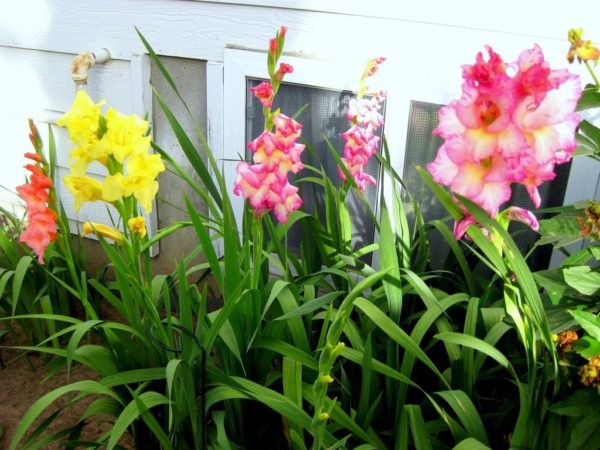
Care for gladioli in the fall includes the following steps:
- dressing flowers;
- proper watering;
- cropping activities;
- digging bulbs;
- sorting;
- pest treatment;
- drying;
- storage.
Feeding Activities
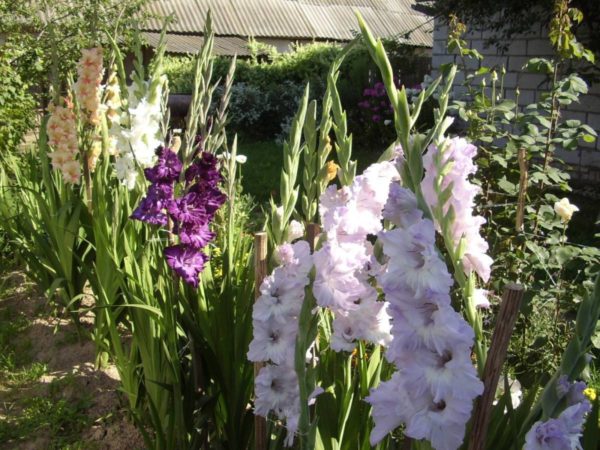
Preparing gladiolus for the winter will help nutrition throughout the growing and flowering season. Closer to the fall, all feeding activities are gradually stopped. After the second sheet appears, saltpeter based on ammonia or potassium is used. Also gladioli respond well to potassium sulfate or urea solution at the rate of 15 g per 0.5 bucket of warmed water. This fertilizer is enough for 0.5 m2 of planting.
The second stage of feeding is carried out after the flower releases the fourth leaf. Apply the same compositions, complementing them with micronutrient fertilizers. Microfertilizers are bred in accordance with the instructions for use.
The third stage of feeding is done after the appearance of the 5th or 6th leaf. The last step should be carried out at a time when the buds appear on the flowers. The soil is treated with nitrophos in a ratio of 25 to 30 g per bucket of heated water.
The final stage is the disinfection of the flower garden with a weak solution of potassium permanganate.
Autumn watering

It is important to properly water gladioli. Caring for them in the fall and preparing for winter should be accompanied by a reduction in watering activities. Abundant irrigation is required for flowers in spring, when they build up green mass and form buds. In summer, flowers are watered with warm, settled water at the rate of 10 to 15 liters per plant. In autumn, watering is reduced to once every two weeks. This is necessary so that the bulbs are well formed.
Peduncle pruning
The main thing during the flowering period is to remove the peduncles in time. They are removed before the formation of seed bolls. This will ensure full ripening of the bulbs. After flowering, the peduncle is immediately cut off, leaving the foliage. A flower that has wilted will not spoil the appearance of the flowerbed, and the bulbs will retain strength for the coming winter.
In summer, when cutting flowers for bouquets, leaves are left as much as possible. This is necessary for the further growth and development of gladioli. One and a half months after cutting the last flower, the bulbs will be fully formed, and they can be dig out of the ground.
Digging bulbs of gladioli
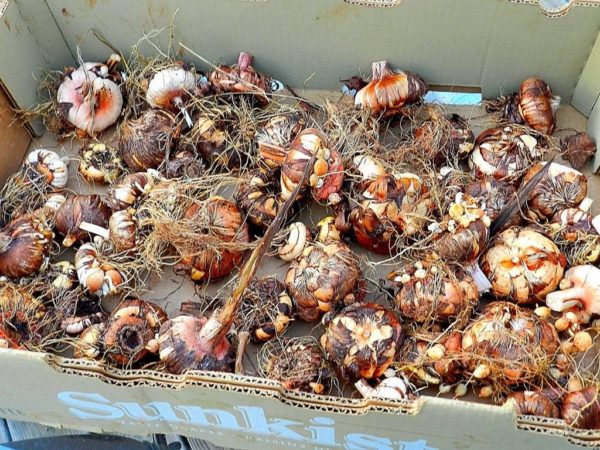
Dig bulbs best in dry sunny weather. It is necessary to prepare containers and a place for their storage. Most often, bulbs store:
- in cardboard boxes;
- in rag bags;
- in boxes of wood.
If you have planted different varieties of flowers on the site, you should prepare several separate containers for them. This will help to avoid confusion during storage. You can also sign each container.
Dig bulbs carefully, using a pitchfork or a shovel. The tool is buried in the ground as far as possible from the root system of the flower, with an indent of 10 cm. After the root is undermined, you need to pull the tuber by the foliage, pull it out of the soil and shake it a little.
Sorting process
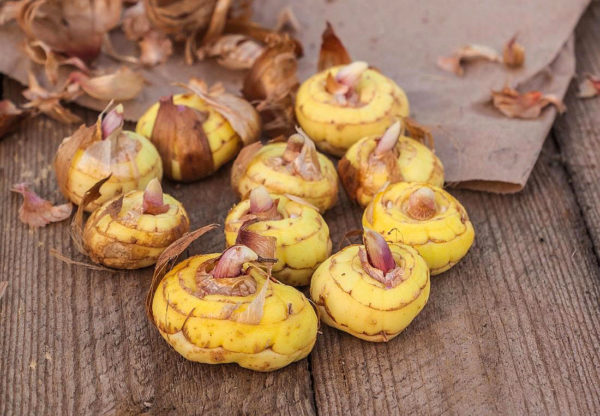
Correct sorting of bulbs after digging will help to properly prepare gladioli for winter. First, damaged and spoiled material is deposited and discarded. Tiny onions may remain on the lumps of earth, which must be preserved. The stems that remain after removing the material from the soil are cut to 2-5 cm.
- dense, healthy, without signs of disease;
- the best material is round bulbs;
- the maximum age of the material is 4 years;
- small bulbs should not be damaged on the scales.
If during sorting you come across bulbs with a flat bottom, send them immediately to the rejection.
Disinfection and Pest Control

At the end of the sorting process, the bulbs are thoroughly cleaned from the ground and disinfected. First they need to be washed in warm water with soap, then placed in a solution of potassium permanganate. The exposure time of the material in the solution is from 30 to 40 minutes, with a liquid concentration of 1-2%.
You can also use several drugs to disinfect. Ampoule means "Maxim" is dissolved in 2 liters of water, the processing time will be half an hour. The ampoule of the Decis preparation is dissolved in 5 l of water, the processing time for a batch of material is 40 minutes. In the “Fundazole” solution, the bulbs are kept for half an hour, after which they are treated with a solution of potassium permanganate or boric acid.
There is another processing option. It is carried out sequentially in two solutions. First, 20 g of chlorophos is dissolved in a large bucket of water and the material is placed there for 20 minutes. In another bucket, 10 g of potassium permanganate is dissolved and bulbs are placed in it - immediately after processing in chlorophos. The exposure time is also 20 minutes. After double disinfection, the material is sent to water heated to 50C, with an exposure of 15-20 minutes. Some gardeners recommend holding the bulbs in cold water to wash off the remnants of disinfectant solutions.
Drying
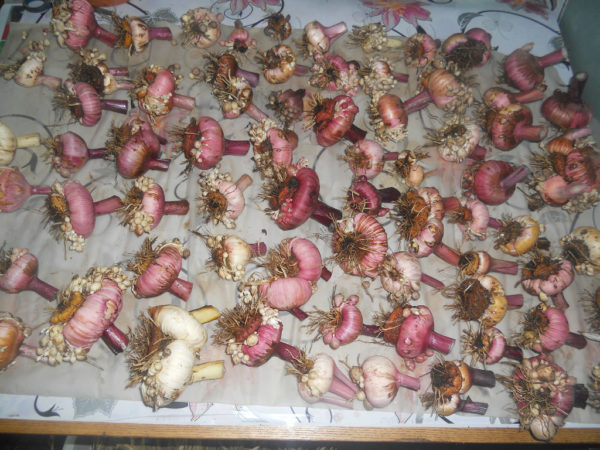
Prepared gladioli must be dried so that they do not rot. Initially, the material is dried at + 28-30C for 7 days. After this, another drying step is carried out - at a temperature of + 20C for 30 days. It is necessary to provide the bulbs with a full circulation of air, decomposing them so that they do not touch each other. Before drying, the material is covered with gauze.
If it is impossible to control the temperature in the room, the material will have to dry for about two months. After drying, each adult onion is peeled. Little "kids" do not clean: they must not be left without a covering scale.
Bookmark the gladiolus bulbs for storage
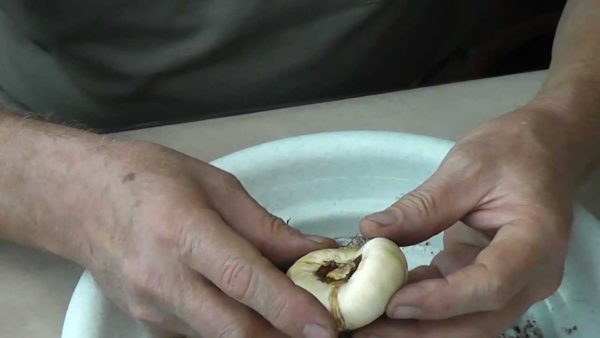
It remains to properly lay the material in containers and leave it to store until spring. All containers must be dry and well ventilated. In cardboard boxes, the material is laid out in a single layer, excluding the contact of the bulbs with each other. After unfolding, they are covered with paper.
Store planting material in a dry and cool room, with temperature indicators from +5 to 8C, with air humidity not higher than 70%. During storage, the tubers are regularly inspected, sorted and removed those that are damaged. In the second half of January, you need to monitor the temperature in the room. It is desirable that it be 2-3 degrees lower so that the bulbs do not sprout.
The ideal place to store tubers is the cellar. The air temperature in the cellar is always stable (+ 3-7C), with air humidity 60%. If you have a cellar, you can get mesh boxes in advance, put tubers in them and put the boxes on top of each other. There should be no vegetables or fruits near the bulbs. Moisture often appears on fruits and vegetables, which can cause the tubers to rot.
Bulbs of gladioli can be stored in city apartments. In this case, the temperature indicator should be from + 8-10C. Most often, planting material is kept:
- on a glazed loggia;
- in the hall;
- on the windowsill;
- in the common corridor.
Tubers are wrapped in old newspapers in three layers and regularly inspected.
One of the best places to store bulbs is considered a refrigerator, especially if it is roomy and high. Humidity and temperature of the refrigerator are ideal for holding planting material in it until spring.
Bulbs can be kept in a compartment designed to store greens. Vegetable containers are good. Each tuber needs to be wrapped in two newspaper layers.
Care for gladioli in the fall in different regions
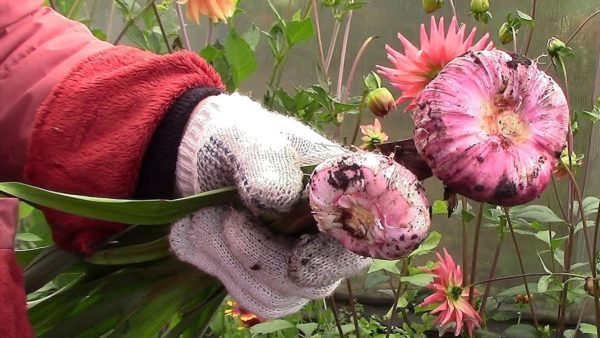
Care for gladioli in different regions is necessary, focusing on the climate. They are dug up until the earth is completely frozen so that they do not freeze with it. You should not rush either. If you dig up the material early, it will not mature and will not germinate in the future.
In the north, tubers are dug in early October, in the south - closer to mid-October. In the Crimea and Krasnodar Territory, frost-resistant species of flowers do not dig up, but grow them like perennials. They are sheltered from the cold with the help of spruce branches.
Some tips for gardeners
To save planting material until spring, several useful tips will help:
- Before storing the tubers, you can hold them in warm paraffin, and then cool in cool water. This will help them retain moisture and avoid infection with fungal spores;
- each tuber should be wrapped in a sheet of paper and only then put in a box;
- in the box you can put a few garlic cloves or sprinkle the material with ash. This will prevent drying out and prevent mold;
- do not try to keep all the tubers "indiscriminately." Weak and empty bulbs will not germinate, rot, and infect healthy material;
- when signing containers indicate the grade and color of the gladiolus. Fresh tubers differ from each other, but during the drying process they will become the same, and distinguish them only by labeling;
- by spring, the material dries up, so before planting it must be soaked in water and left for several hours.
Gladioli are wonderful flowers that require careful care. If they are properly looked after, they will delight gardeners with their unusual beauty every year.

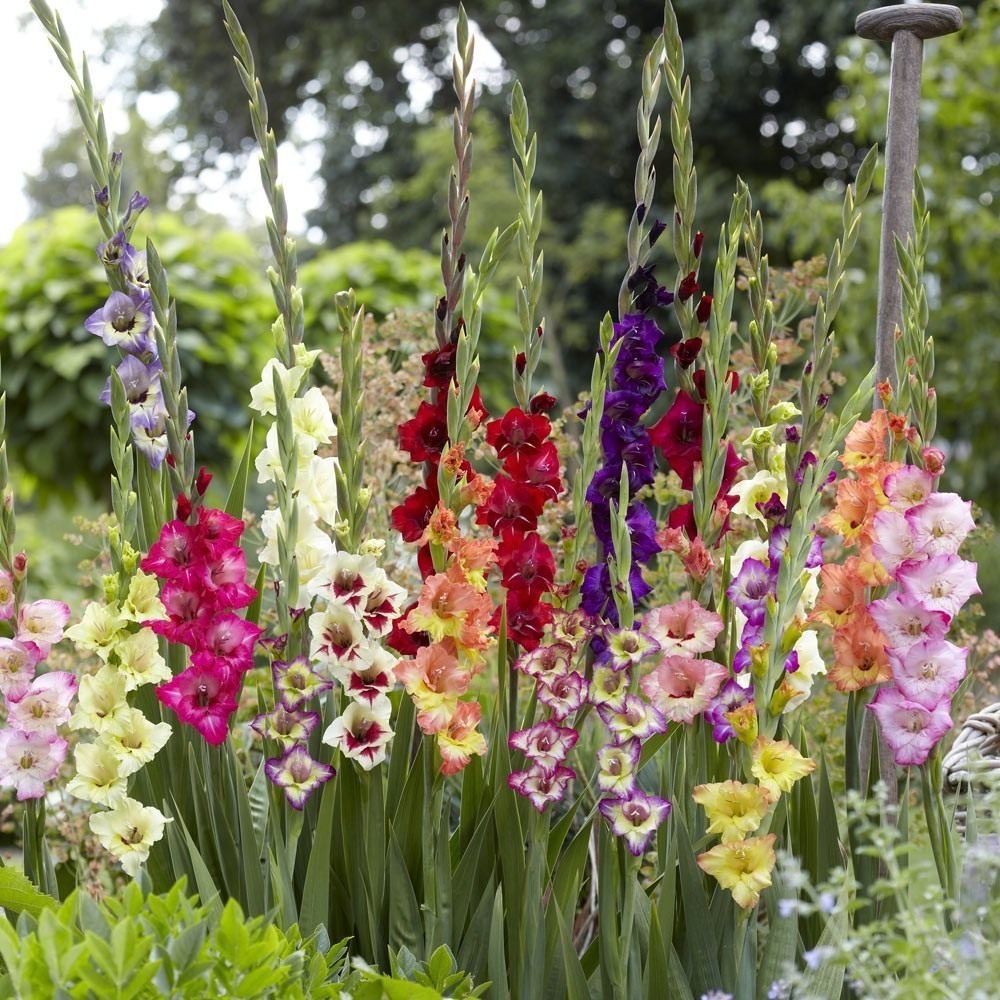
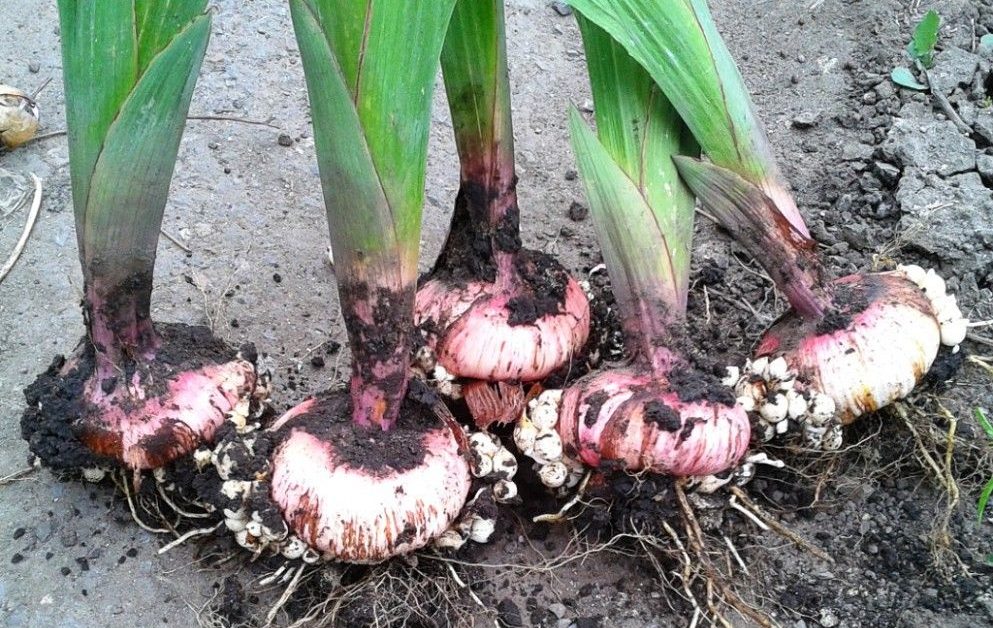
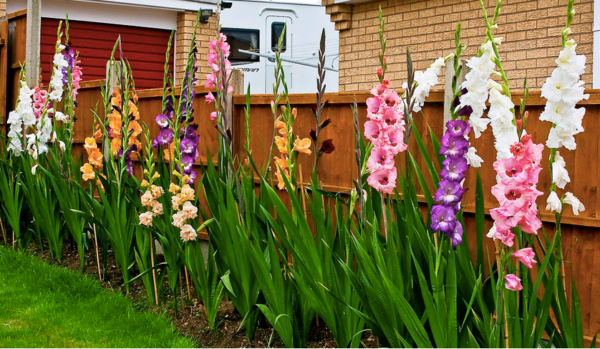
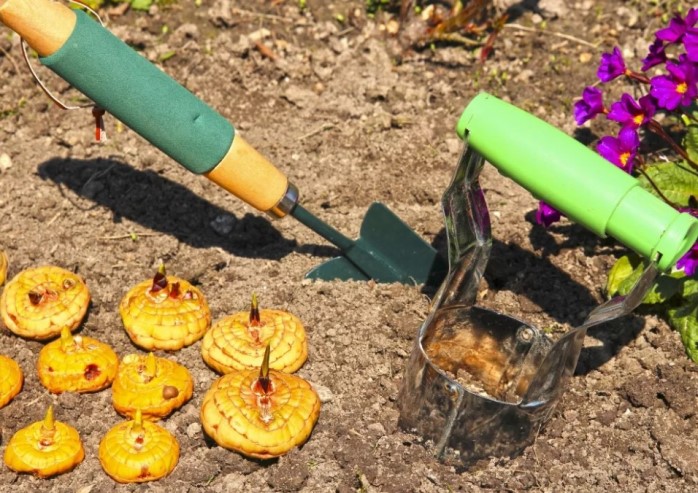 When and how to plant gladioli in spring in open ground
When and how to plant gladioli in spring in open ground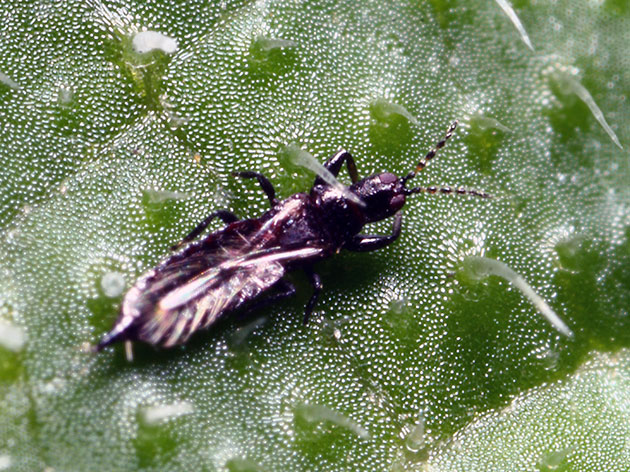 How to deal with thrips on gladioli
How to deal with thrips on gladioli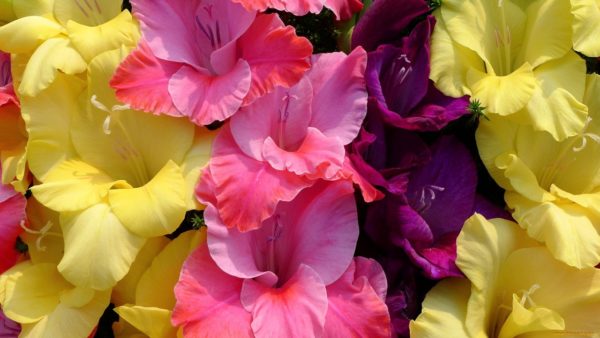 Gladioli: landing and care in the open ground
Gladioli: landing and care in the open ground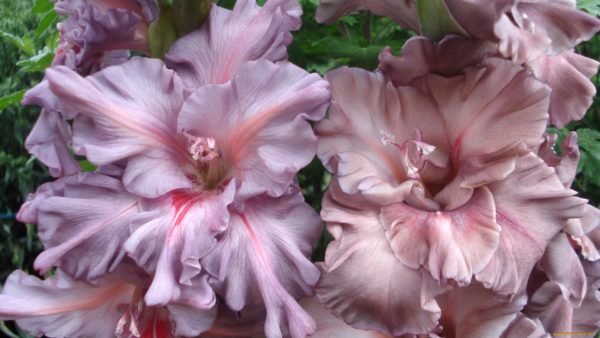 Children of gladioli: what to do with them
Children of gladioli: what to do with them